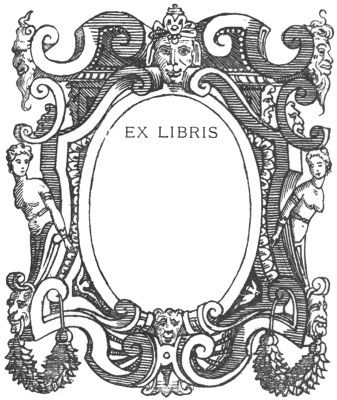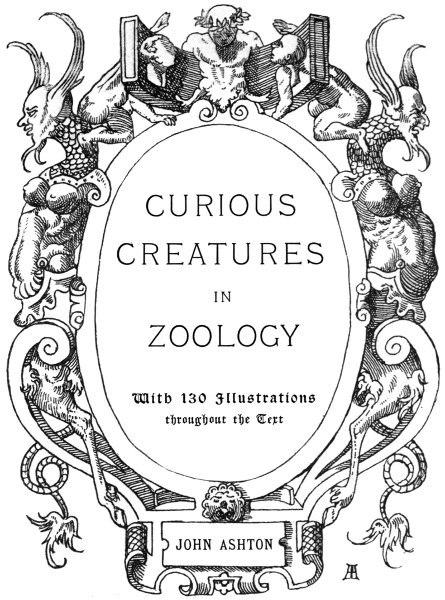
Two hundred and ten copies of this Work printed on superfineRoyal 8vo paper. Each copy numbered. Type distributed.

CURIOUSCREATURESINZOOLOGY
JOHN C. NIMMO
14, KING WILLIAM STREET, STRAND
1890

PREFACE.
“Travellers see strange things,” more especially whentheir writing about, or delineation of, them is not putunder the microscope of modern scientific examination.Our ancestors were content with what was given them,and being, as a rule, a stay-at-home race, they couldnot confute the stories they read in books. That ageof faith must have had its comforts, for no man coulddeny the truth of what he was told. But now thatmodern travel has subdued the globe, and inquisitivestrangers have poked their noses into every portion ofthe world, “the old order changeth, giving place tonew,” and, gradually, the old stories are forgotten.
It is to rescue some of them from the oblivion intowhich they were fast falling, that I have written, orcompiled, this book. I say compiled it, for I am fonderof letting old authors tell their stories in their old-fashionedlanguage, than to paraphrase it, and usurpthe credit of their writings, as is too much the modenow-a-days.
It is not given to every one to be able to consult theold Naturalists; and, besides, most of them are writtenin Latin, and to read them through is partly unprofitablework, as they copy so largely one from another.But, for the general reader, selections can be made, and,if assisted by accurate reproductions of the very quaintwood engravings, a book may be produced which, Iventure to think, will not prove tiring, even to a superficialreader.
Perhaps the greatest wonders of the creation, andthe strangest forms of being, have been met with in thesea; and as people who only occasionally saw themwere not draughtsmen, but had to describe the monstersthey had seen on their return to land, their effigies cameto be exceedingly marvellous, and unlike the originals.The Northern Ocean, especially, was their abode, and,among the Northern nations, tales of Kraken, Sea-Serpents,Whirlpools, Mermen, &c., &c., lingered long afterthey were received with doubt by other nations; butperhaps the most credulous times were the fourteenthand fifteenth centuries, when no travellers’ tales seemtoo gross for belief, as can well be seen in the extremepopularity, throughout all Europe, of the “Voyages andTravels of Sir John Maundeville,” who, though he maybe a myth, and his so-called writings a compilation,yet that compilation represented the sum of knowledge,both of Geography, and Natural History, of countriesnot European, that was attaina